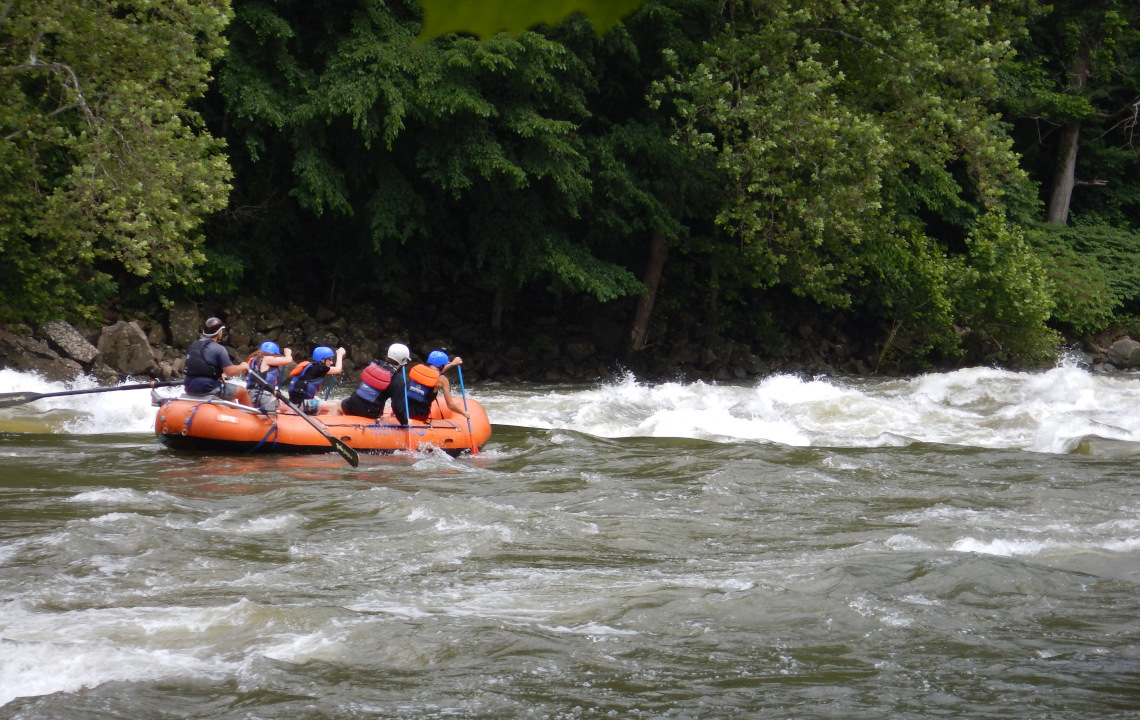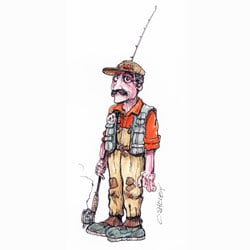Planning a camping, floating or backpacking trip this Spring? Get tips from a rafting guide on how to pack perishables for safe, substantial and tasty meals for a crowd of (almost) any size.
If you’re planning an extended trip in the backwoods or floating a river, meal planning can be a daunting task. Many variables come into play, such as time out, the size of the group and the quality of the meals. This can become even more challenging when you consider that different foods each have a unique shelf life.
Aaron Mittel, a rafting guide for the past eight years at Adventures on the Gorge in West Virginia, has planned meals for multi-day trips rafting the New River and other whitewater rivers. Some nights, he’s had to feed up to one hundred people alongside a stream. With those kinds of numbers, a good plan is critical.
Outdoor Cooking Meal Planning Tips
To start, Mittel begins by planning for the number of people and days on the river. Then he packs for each day.
“I like to use round coolers,” says Mittel, adding that rectangles never fit in a raft well. Even for his dry goods, he will pack using waterproof bags or buckets with lid closures.
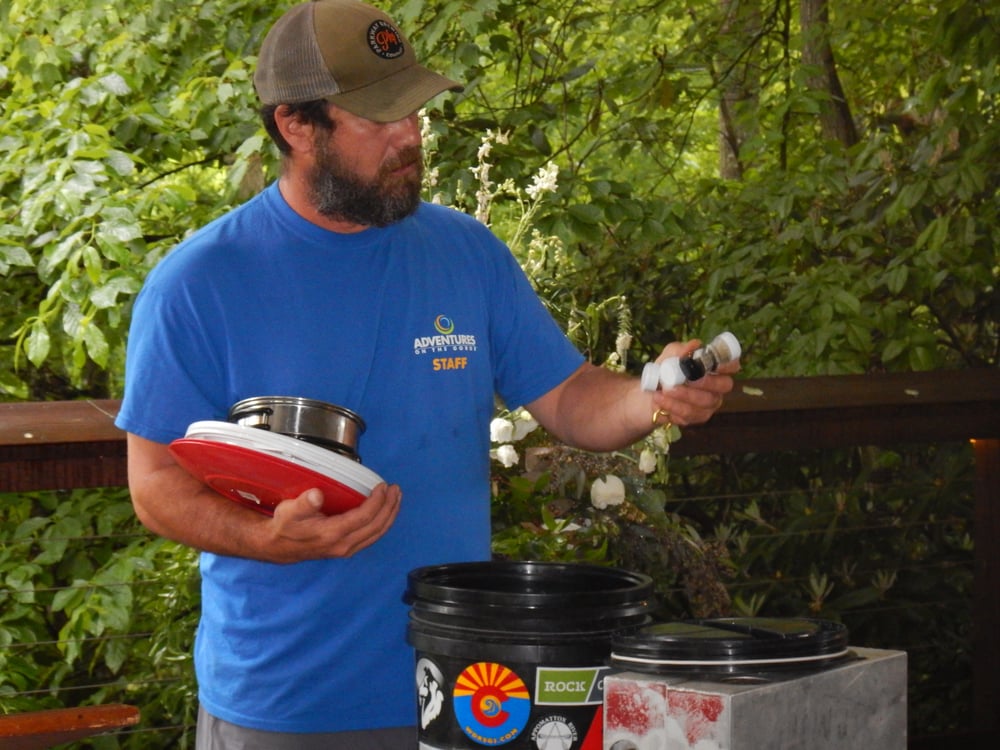
“Then I number the coolers so they are only opened at the time of use.” This helps maintain cold temperatures in the coolers by never breaking the seals until the contents are needed.
The Importance of Ice When Packing Perishables
Second, Mittel points out that “ice is huge.”
For his coolant, he likes to use frozen water bottles. This way, none of the space in the cooler is wasted since the bottles provide cold temperatures up until the day that the cooler is opened. Then, you also have drinking water as a side benefit of keeping the food cold.
Furthermore, if the ice bottles have melted, that’s a good indication that you lost temperature, and sensitive foods might have spoiled.
Even better, pack a meat thermometer in the cooler to check upon opening. This is especially helpful with your most temperature-sensitive foods.
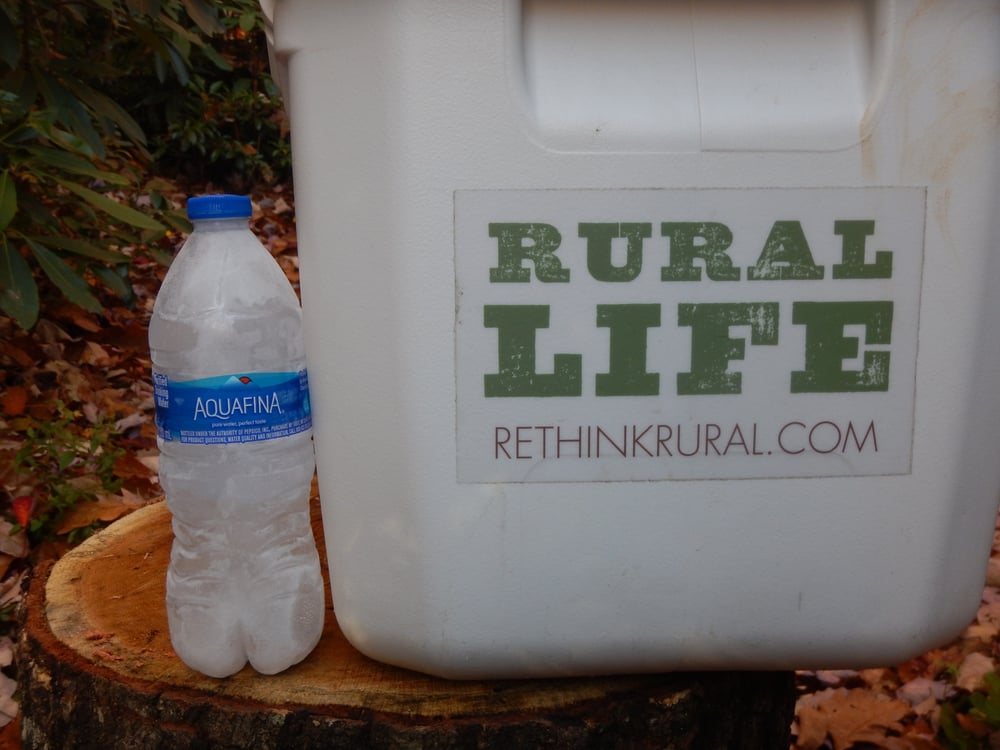
Use The Foods With Shortest Shelf Lives First
The third consideration in packing perishables is to use the foods with the shortest shelf lives first.
For instance, fresh fish may need to be cooked the first or second day, while vacuum-packaged steaks or hot dogs will keep longer.
On longer trips, you may find yourself working with dehydrated foods on the latter days so that shelf-life becomes even less of a concern.
If you want more information on the shelf-life of different foods, visit FoodSafety.gov here, which has cold-food storage charts. This website, managed by the U.S. Department of Health and Human Services, offers recommendations for fresh and frozen food storage.
Keep in mind these refrigerated storage times are for 40 degrees Fahrenheit or below. As temperatures rise, shelf-life gets shorter.
Last, Mittel notes, “The more remote you are, the more important food safety becomes. You might consider setting up a small sink for the cook with a little bleach as a hand sanitizer.”
Beware of Cross-Contamination When Packing and Preparing Food Outdoors
Another area of food safety to consider is cross-contamination.
Raw meat has bacteria on it that can transfer to other surfaces. These bacteria are killed in the cooking process when the meat is cooked to proper temperatures (see cooking temperature recommendations at the FoodSafety site).
But when other foods that aren’t cooked come in contact with these surfaces that also come into contact with raw meat, bacteria get on these uncooked foods and are consumed. This can result in a variety of food poisoning issues., which are even less fun when you're in the middle of the wilderness!
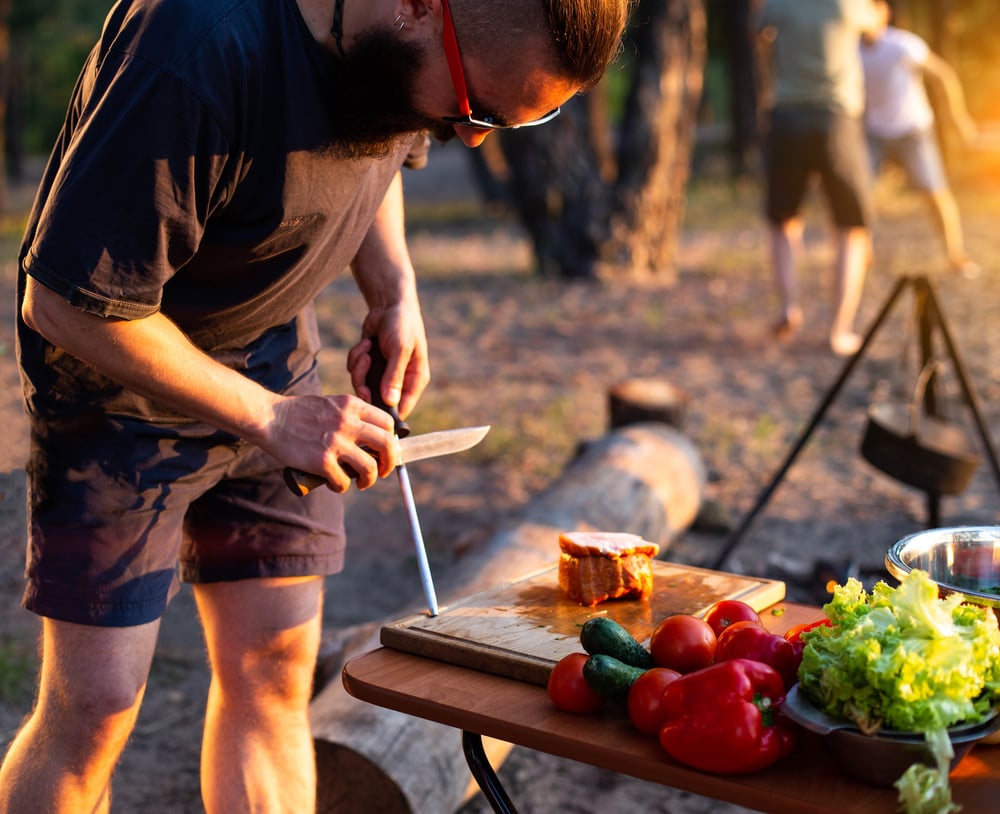
One way cross-contamination commonly occurs is when raw meat is prepared on a cutting board and then used to chop lettuce or fruit.
Also, cross-contamination can occur when the same platter is used to take raw meat to the grill and then return it to the table without cleaning the platter.
You can avoid these issues by using separate cutting boards for raw meats and any foods that aren’t to be cooked or have already been cooked. If you don’t have that luxury, cut the foods that won’t be cooked first, then use that board for the raw meats.
Likewise, proper cleaning of utensils and plates is equally critical. This is especially true as these items are at ambient temperatures for the duration of the trip.
Hot, soapy water heated to 200 degrees (biodegradable soap, please!) is essential for washing cutting boards and platters. You may want to follow up with a disinfectant, such as diluted bleach or 3% hydrogen peroxide.
As one of my food scientist friends often says, “Keep it cold and keep it clean.” That way, you can focus on the next set of rapids.
To Recap
You can do a lot by combining non-perishables and perishables on a multi-day trip safely if you follow these basics rules:
- Plan ahead. Know how many people you're serving and make sure you have the proper food storage containers to house perishables safely.
- Have plenty of ice and cooling agents. Frozen water bottles are wonderful as they keep food cool while being an additional source of fresh water.
- Use perishables with the shortest shelf-lives first. Use food safety sites to help you determine which perishables will last the longest (fish vs. hot dogs, for example).
- Be extra aware of cross contamination. Prepare meats, fish, seafood, eggs, and dairy on separate cutting boards or platters than fresh produce. Wash your dishes in 200 degree water with biodegradable soap and consider using a disinfectant on cutting boards and platters that have housed raw meat.
Looking for outdoor travel inspiration?
Check out the following articles:


